Abstract
Vibrio bacteriophages were isolated by enrichment from 177 of 643 samples of marine molluscan shellfish, crustaceans, seawater, and sediments. The predominant bacteriophage types isolated were specific for some strains of Vibrio parahaemolyticus. A high frequency of phage isolations was also observed with strains of agar-digesting vibrios (21 of 56) and psychrophilic vibrios (14 of 72) that were originally isolated from non-shellfish growing areas. No bacteriophages were isolated against V. alginolyticus and only rarely for V. anguillarum even though these were the two most abundant species found in near-shore environments. No V. cholerae phages were isolated. It was also determined from quantitative studies on the Pacific oyster (Crassostrea gigas) obtained from two environments in Washington and Oregon that the titers of V. parahaemolyticus bacteriophages increased with increasing seasonal water temperatures and that this was proportional to the increase in numbers of mesophilic vibrios and not with the incidence of V. parahaemolyticus. Titers of V. parahaemolyticus bacteriophages occasionally exceeded 106 per g of oyster during the summer months. Specific V. parahaemolyticus bacteriophages were also isolated from market seafoods and other marine samples that originated in cold environments where no mesophilic vibrios are expected to be found. The possibility that V. parahaemolyticus bacteriophages originate from Vibrio spp. other than V. parahaemolyticus and the role of these bacteriophages in the ecology of marine vibrios are discussed.
Full text
PDF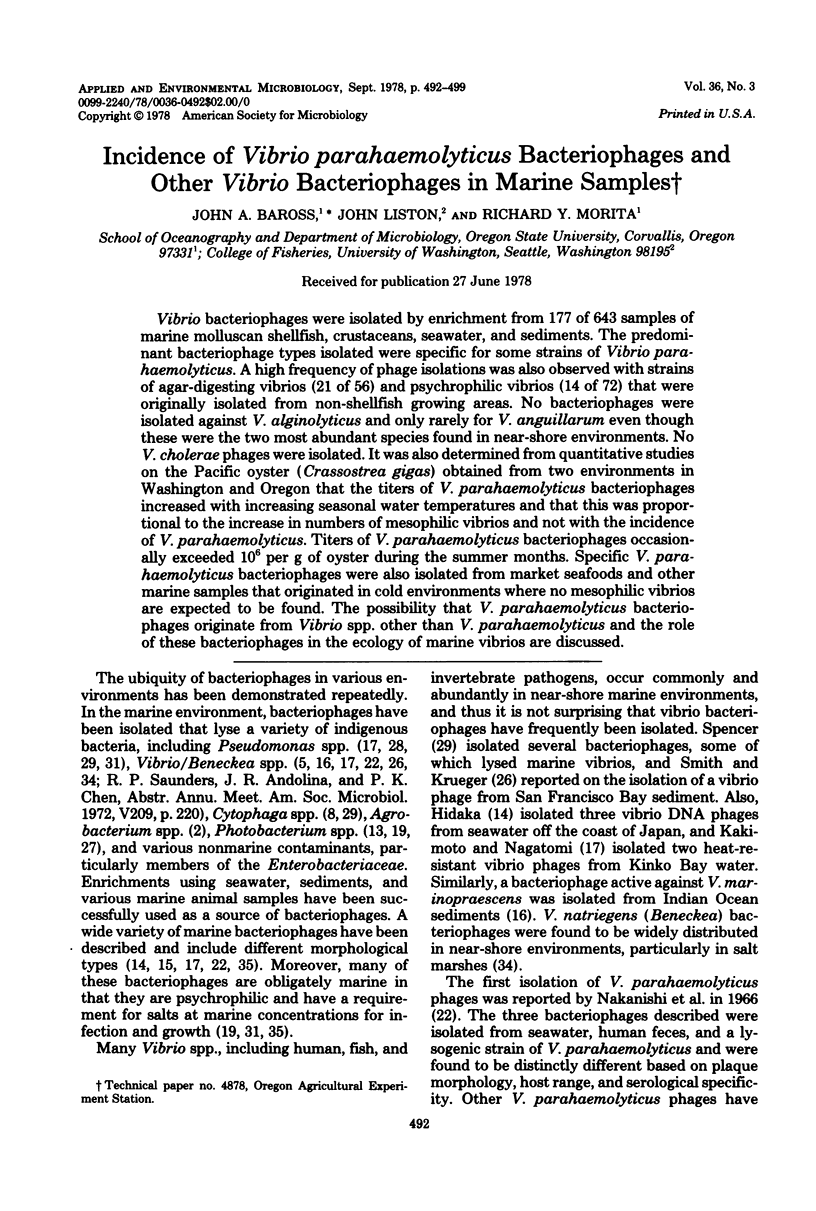
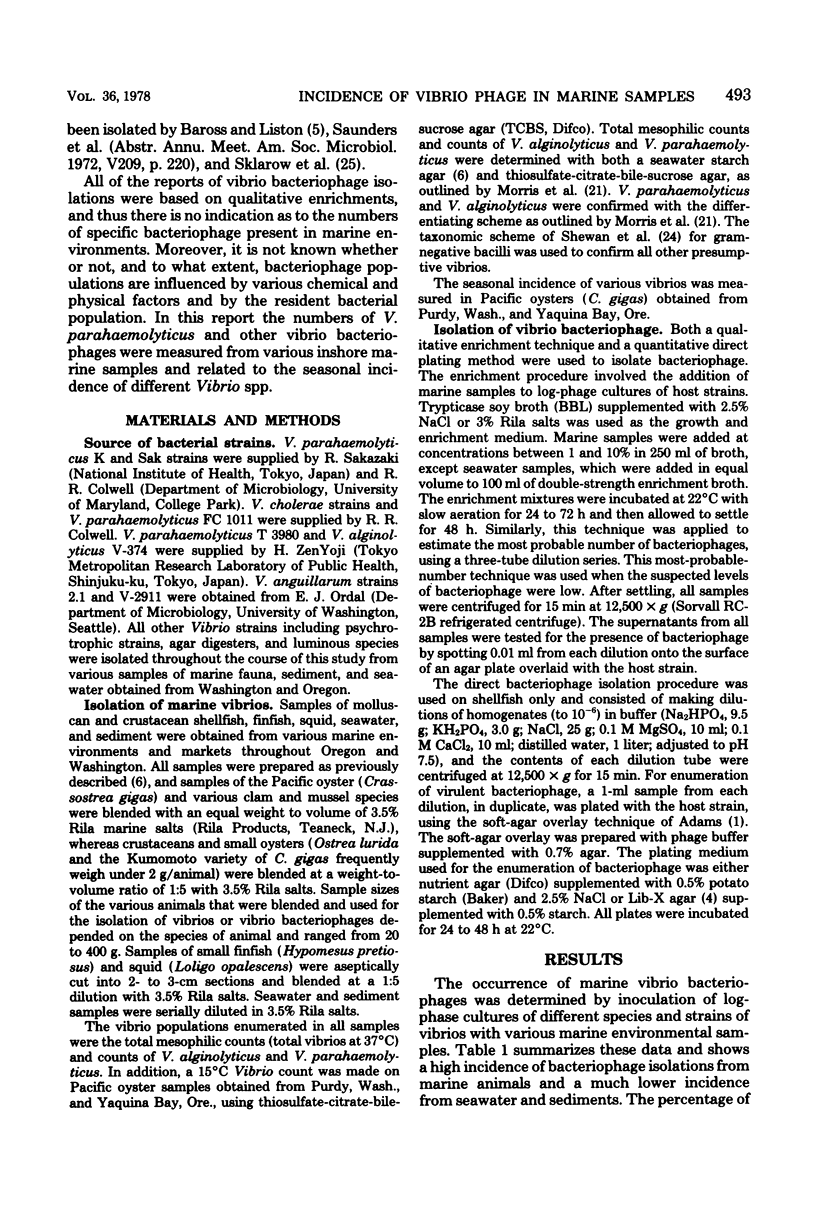
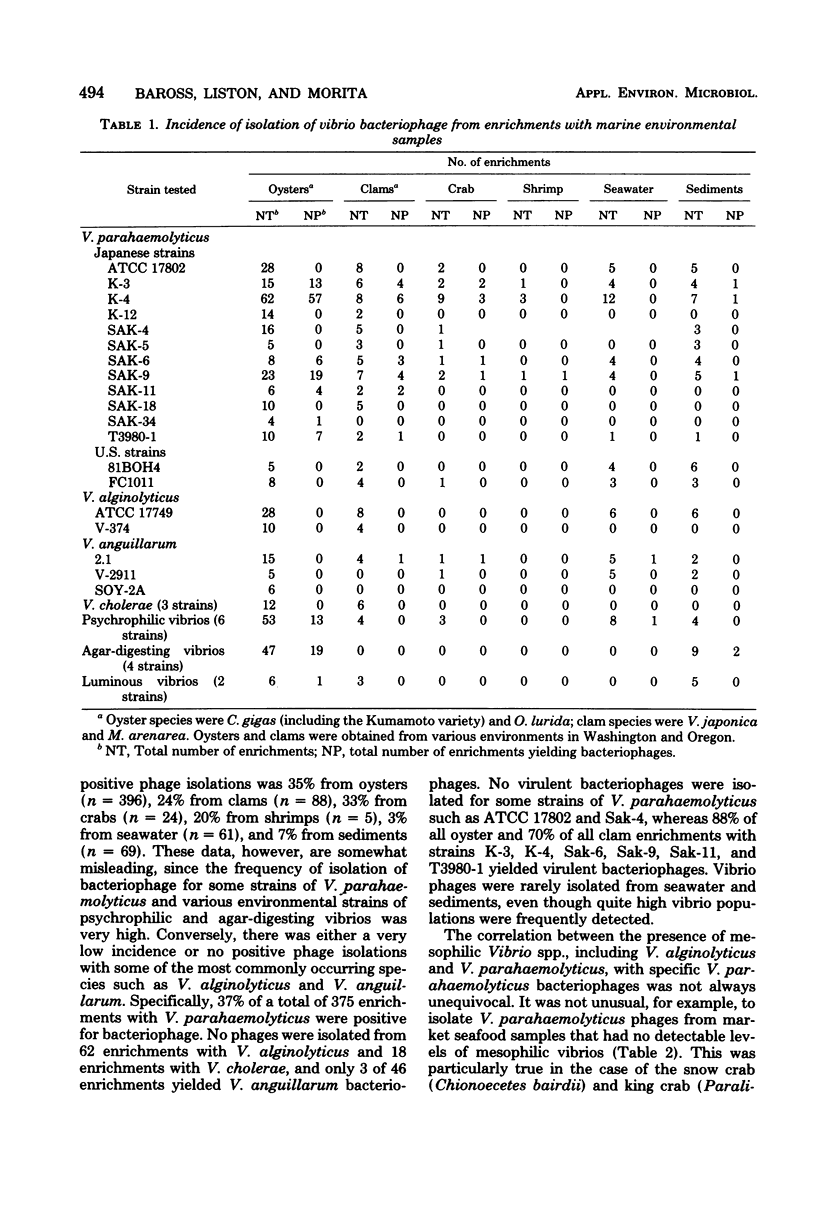
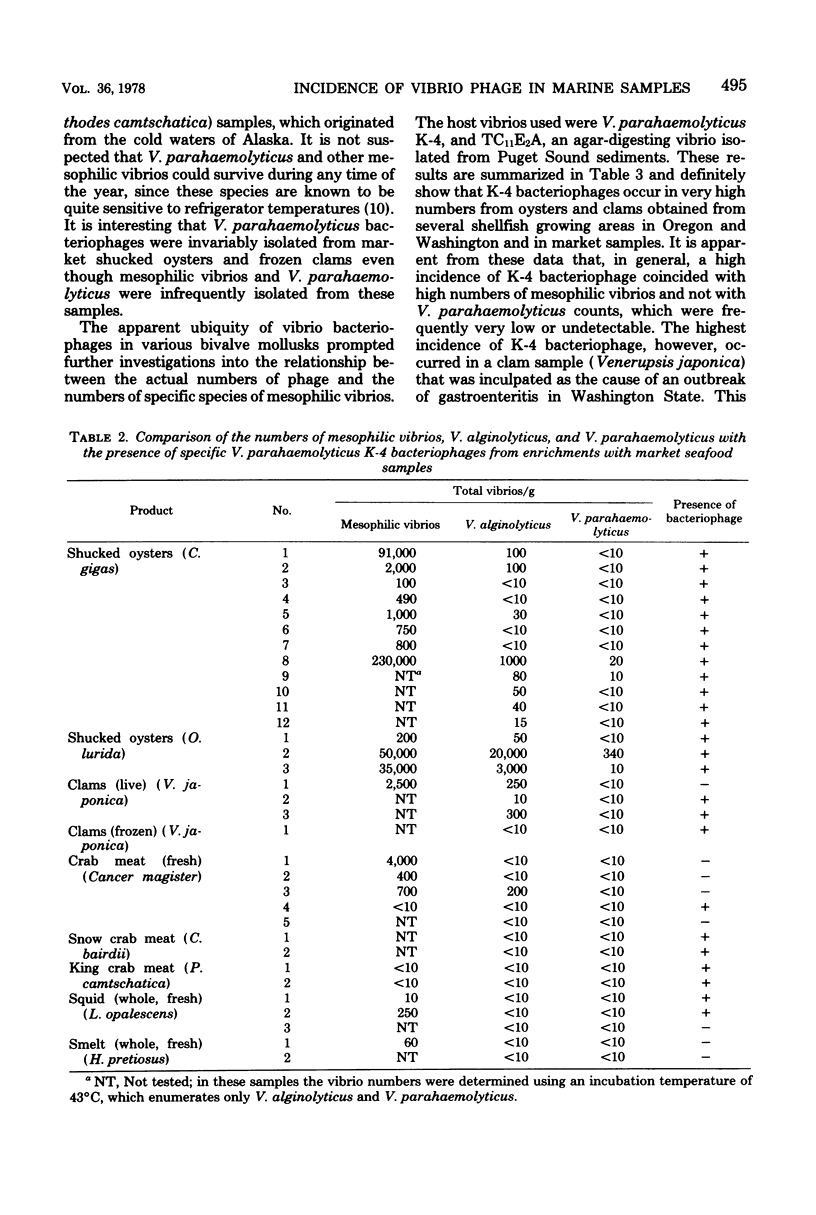
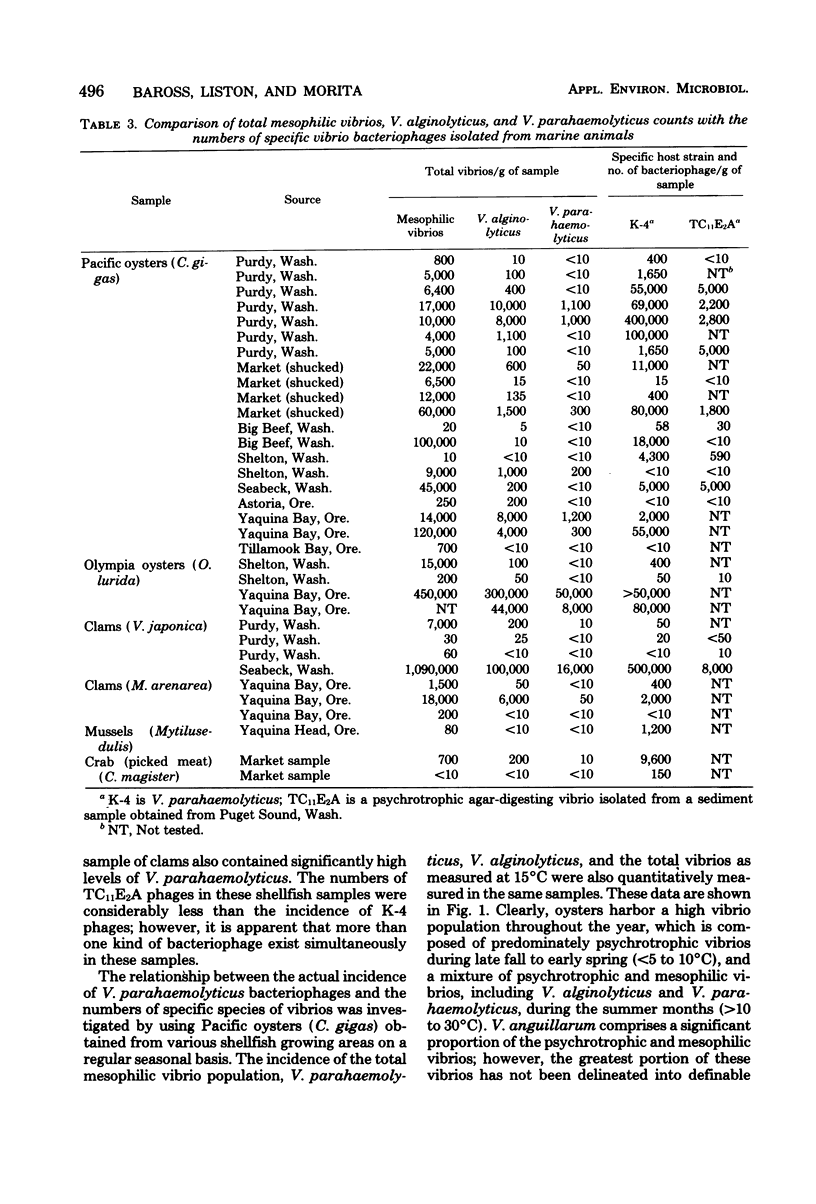
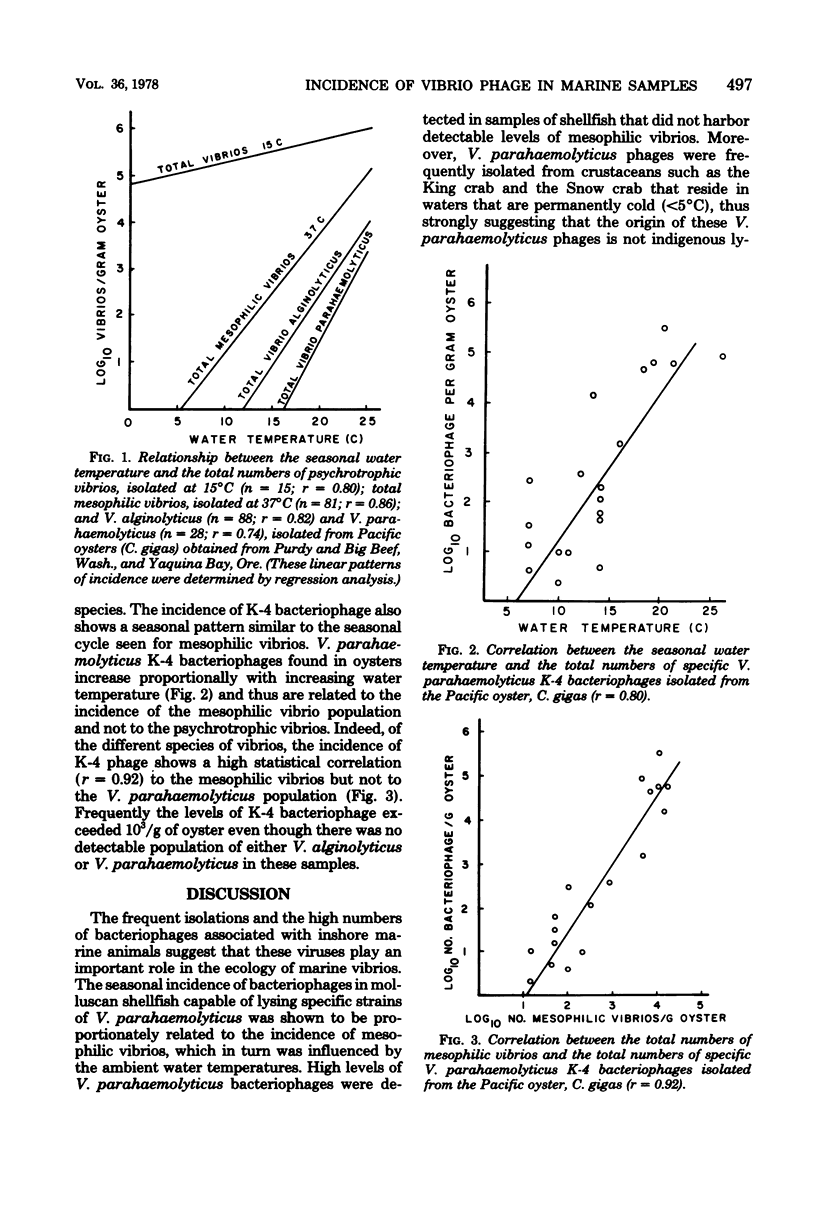
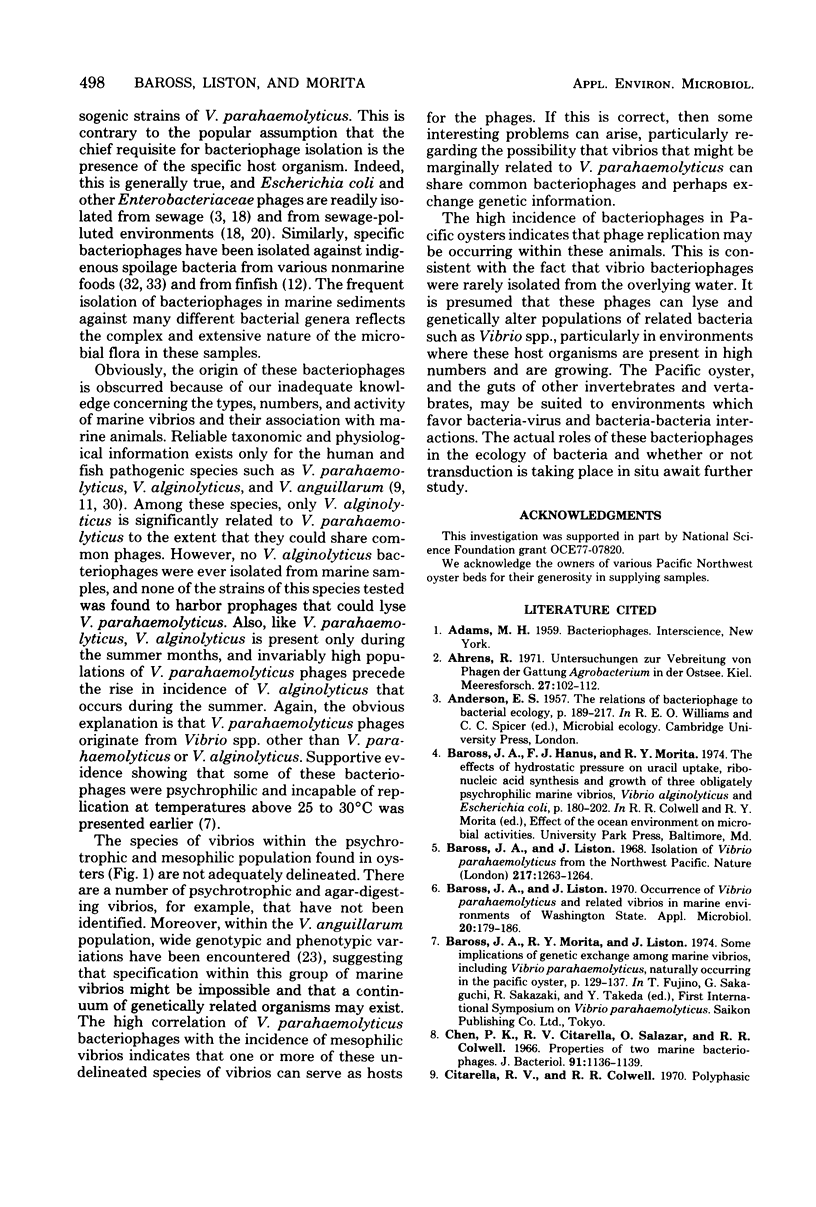
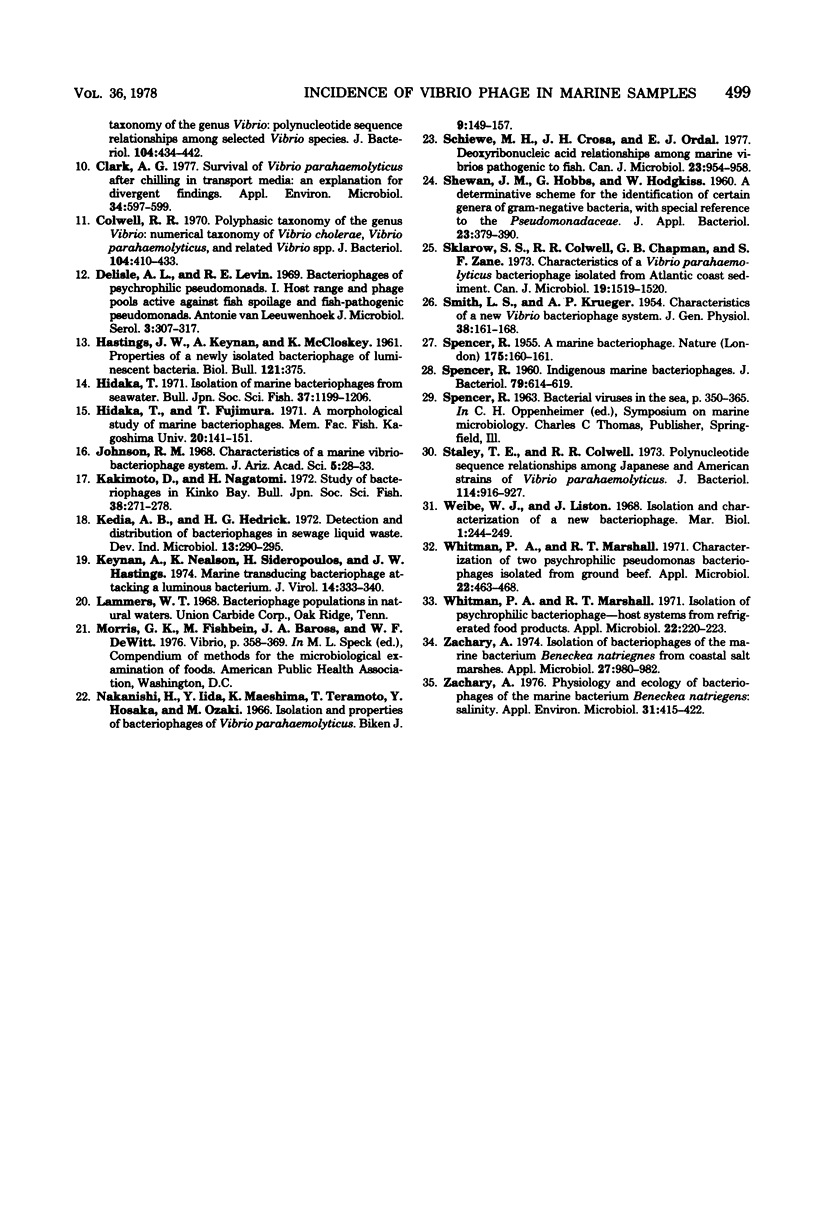
Selected References
These references are in PubMed. This may not be the complete list of references from this article.
- Baross J., Liston J. Isolation of vibrio parahaemolyticus from the Northwest Pacific. Nature. 1968 Mar 30;217(5135):1263–1264. doi: 10.1038/2171263a0. [DOI] [PubMed] [Google Scholar]
- Baross J., Liston J. Occurrence of Vibrio parahaemolyticus and related hemolytic vibrios in marine environments of Washington State. Appl Microbiol. 1970 Aug;20(2):179–186. doi: 10.1128/am.20.2.179-186.1970. [DOI] [PMC free article] [PubMed] [Google Scholar]
- Chen P. K., Citarella R. V., Salazar O., Colwell R. R. Properties of two marine bacteriophages. J Bacteriol. 1966 Mar;91(3):1136–1139. doi: 10.1128/jb.91.3.1136-1139.1966. [DOI] [PMC free article] [PubMed] [Google Scholar]
- Citarella R. V., Colwell R. R. Polyphasic taxonomy of the genus Vibrio: polynucleotide sequence relationships among selected Vibrio species. J Bacteriol. 1970 Oct;104(1):434–442. doi: 10.1128/jb.104.1.434-442.1970. [DOI] [PMC free article] [PubMed] [Google Scholar]
- Clark A. G. Survival of Vibrio parahaemolyticus after chilling in transport media: an explanation for divergent findings. Appl Environ Microbiol. 1977 Nov;34(5):597–599. doi: 10.1128/aem.34.5.597-599.1977. [DOI] [PMC free article] [PubMed] [Google Scholar]
- Colwell R. R. Polyphasic taxonomy of the genus vibrio: numerical taxonomy of Vibrio cholerae, Vibrio parahaemolyticus, and related Vibrio species. J Bacteriol. 1970 Oct;104(1):410–433. doi: 10.1128/jb.104.1.410-433.1970. [DOI] [PMC free article] [PubMed] [Google Scholar]
- Delisle A. L., Levin R. E. Bacteriophages of psychrophilic pseudomonads. I. Host range of phage pools active against fish spoilage and fish-pathogenic pseudomonads. Antonie Van Leeuwenhoek. 1969;35(3):307–317. doi: 10.1007/BF02219151. [DOI] [PubMed] [Google Scholar]
- Keynan A., Nealson K., Sideropoulos H., Hastings J. W. Marine transducing bacteriophage attacking a luminous bacterium. J Virol. 1974 Aug;14(2):333–340. doi: 10.1128/jvi.14.2.333-340.1974. [DOI] [PMC free article] [PubMed] [Google Scholar]
- SMITH L. S., KRUEGER A. P. Characteristics of a new vibrio-bacteriophage system. J Gen Physiol. 1954 Nov 20;38(2):161–168. doi: 10.1085/jgp.38.2.161. [DOI] [PMC free article] [PubMed] [Google Scholar]
- Schiewe M. H., Crosa J. H., Ordal E. J. Deoxyribonucleic acid relationships among marine vibrios pathogenic to fish. Can J Microbiol. 1977 Aug;23(8):954–958. doi: 10.1139/m77-142. [DOI] [PubMed] [Google Scholar]
- Sklarow S. S., Colwell R. R., Chapman G. B., Zane S. F. Characteristics of a Vibrio parahaemolyticus bacteriophage isolated from Atlantic coast sediment. Can J Microbiol. 1973 Dec;19(12):1519–1520. doi: 10.1139/m73-248. [DOI] [PubMed] [Google Scholar]
- Spencer R. INDIGENOUS MARINE BACTERIOPHAGES. J Bacteriol. 1960 Apr;79(4):614–614. doi: 10.1128/jb.79.4.614-614.1960. [DOI] [PMC free article] [PubMed] [Google Scholar]
- Staley T. E., Colwell R. R. Polynucleotide sequence relationships among Japanese and American strains of Vibrio parahaemolyticus. J Bacteriol. 1973 Jun;114(3):916–927. doi: 10.1128/jb.114.3.916-927.1973. [DOI] [PMC free article] [PubMed] [Google Scholar]
- Whitman P. A., Marshall R. T. Characterization of two psychrophilic Pseudomonas bacteriophages isolated from ground beef. Appl Microbiol. 1971 Sep;22(3):463–468. doi: 10.1128/am.22.3.463-468.1971. [DOI] [PMC free article] [PubMed] [Google Scholar]
- Whitman P. A., Marshall R. T. Isolation of psychrophilic bacteriophage-host systems from refrigerated food products. Appl Microbiol. 1971 Aug;22(2):220–223. doi: 10.1128/am.22.2.220-223.1971. [DOI] [PMC free article] [PubMed] [Google Scholar]
- Zachary A. Isolation of bacteriophages of the marine bacterium Beneckea natriegens from coastal salt marshes. Appl Microbiol. 1974 May;27(5):980–982. doi: 10.1128/am.27.5.980-982.1974. [DOI] [PMC free article] [PubMed] [Google Scholar]
- Zachary A. Physiology and ecology of bacteriophages of the marine bacterium Beneckea natriegens: salinity. Appl Environ Microbiol. 1976 Mar;31(3):415–422. doi: 10.1128/aem.31.3.415-422.1976. [DOI] [PMC free article] [PubMed] [Google Scholar]


